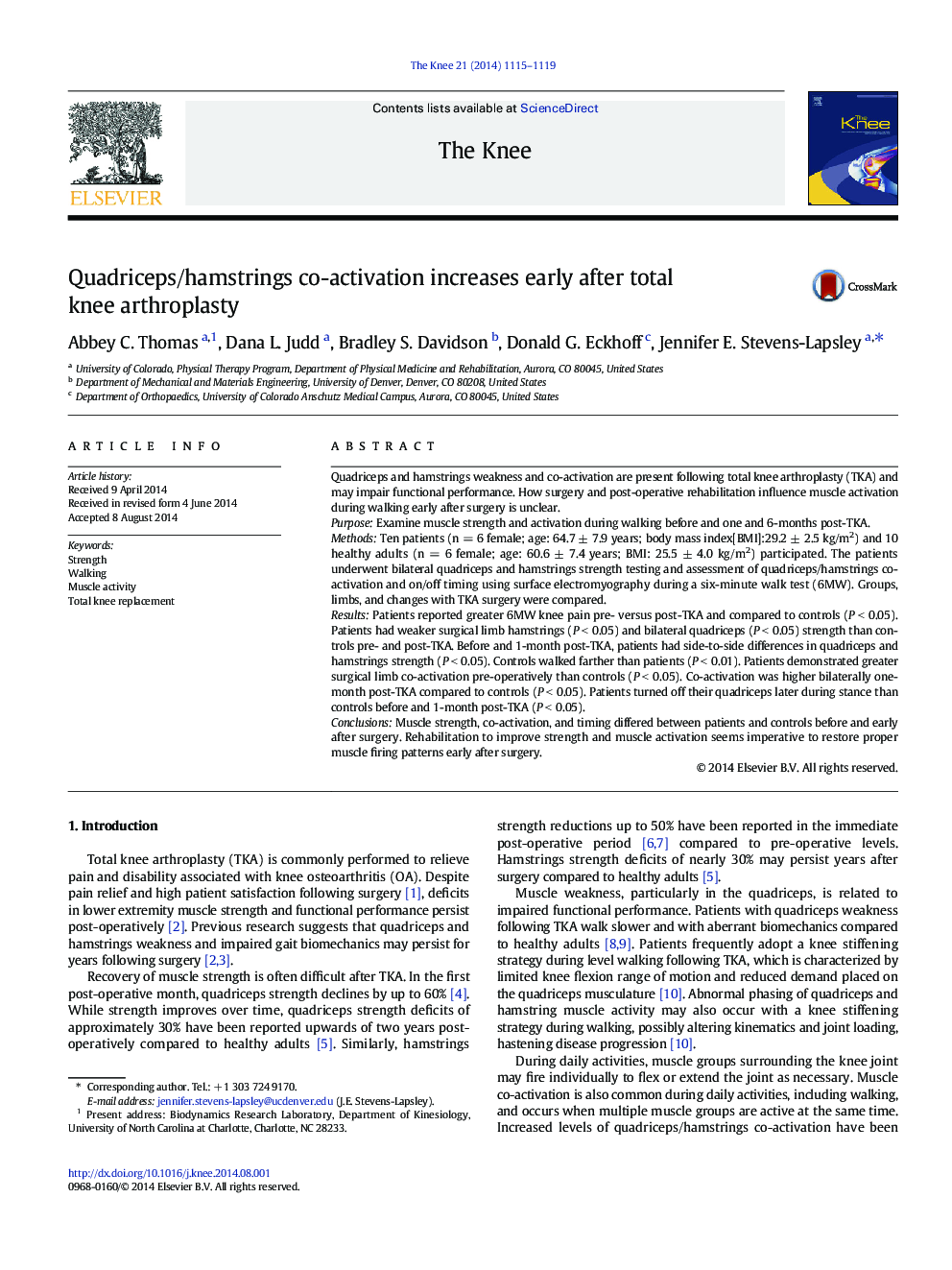| کد مقاله | کد نشریه | سال انتشار | مقاله انگلیسی | نسخه تمام متن |
|---|---|---|---|---|
| 6211337 | 1267213 | 2014 | 5 صفحه PDF | دانلود رایگان |
- Muscle co-activation is elevated bilaterally in patients one month after TKA.
- Muscle co-activation is greater in patients than healthy adults.
- Quadriceps activity is prolonged during stance before and early after TKA.
- Rehabilitation should integrate strength and neuromuscular control retraining.
Quadriceps and hamstrings weakness and co-activation are present following total knee arthroplasty (TKA) and may impair functional performance. How surgery and post-operative rehabilitation influence muscle activation during walking early after surgery is unclear.PurposeExamine muscle strength and activation during walking before and one and 6-months post-TKA.MethodsTen patients (n = 6 female; age: 64.7 ± 7.9 years; body mass index[BMI]:29.2 ± 2.5 kg/m2) and 10 healthy adults (n = 6 female; age: 60.6 ± 7.4 years; BMI: 25.5 ± 4.0 kg/m2) participated. The patients underwent bilateral quadriceps and hamstrings strength testing and assessment of quadriceps/hamstrings co-activation and on/off timing using surface electromyography during a six-minute walk test (6MW). Groups, limbs, and changes with TKA surgery were compared.ResultsPatients reported greater 6MW knee pain pre- versus post-TKA and compared to controls (P < 0.05). Patients had weaker surgical limb hamstrings (P < 0.05) and bilateral quadriceps (P < 0.05) strength than controls pre- and post-TKA. Before and 1-month post-TKA, patients had side-to-side differences in quadriceps and hamstrings strength (P < 0.05). Controls walked farther than patients (P < 0.01). Patients demonstrated greater surgical limb co-activation pre-operatively than controls (P < 0.05). Co-activation was higher bilaterally one-month post-TKA compared to controls (P < 0.05). Patients turned off their quadriceps later during stance than controls before and 1-month post-TKA (P < 0.05).ConclusionsMuscle strength, co-activation, and timing differed between patients and controls before and early after surgery. Rehabilitation to improve strength and muscle activation seems imperative to restore proper muscle firing patterns early after surgery.
Journal: The Knee - Volume 21, Issue 6, December 2014, Pages 1115-1119
